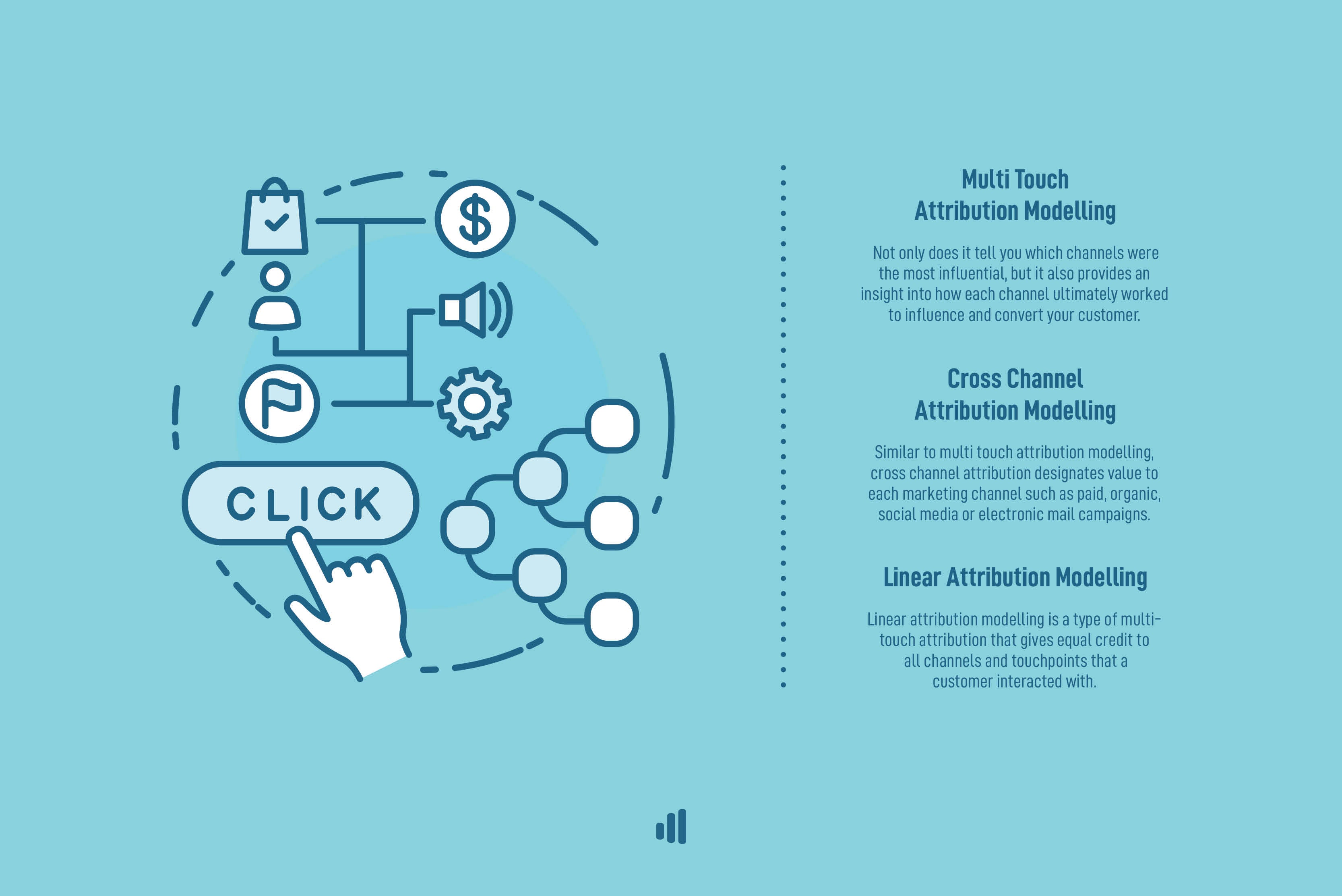To pinpoint exactly which strategy turned your prospects into buyers, it’s time for you to get acquainted with the concept of attribution modelling.
In a perfect world, a customer would read one article published by a business, and immediately make a purchase. In reality, it’s less of a straight line and often more of a squiggle – they might read a blog post, then read the same content again a week later, then click on a retargeting ad, then subscribe to an e-newsletter, then make a purchase.

The question is, how on earth do business owners or marketing professionals track this conversion, and which avenue or platform ultimately gets the credit for the sale? Enter, the magic of attribution modelling.
How Attribution Modelling Works
At its core, marketing attribution modelling allows you to identify the marketing channels and touchpoints used throughout the buyer’s journey. In turn, this allows you to pay attention and give credit to the processes that made a lead convert into a sale.
The primary benefits of assigning credit where it’s due is that it allows you to increase your chances of converting more prospects, by identifying key areas of the buyer’s journey that you can improve on, measuring your return on investment, determining which platforms are worthy of your attention, and to tailor your marketing campaigns and content accordingly. In a nutshell, it’s a means to an end when it comes to getting a bang for your advertising buck.
Although all attribution models carefully assess the channels and touchpoints used in a customer’s decision to convert, each of them weighs those channels and touchpoints differently. Just a handful of the most common types include the following.
Multi Touch Attribution Modelling – This mode takes into account every channel and touchpoint that a customer interacted with. Not only does it tell you which channels were the most influential, but it also provides an insight into how each channel ultimately worked together to influence and convert your customer.
Cross Channel Attribution Modelling – Similar to multi touch attribution modelling, cross channel attribution designates value to each marketing channel (such as paid, organic, social media or electronic direct mail campaigns) but doesn’t address the specific touchpoints within those channels quite like multi touch attribution does.
Linear Attribution Modelling – Linear attribution modelling is a type of multi-touch attribution that gives equal credit to all channels and touchpoints that a customer interacted with throughout the buyer’s journey. This method may not be the most effective if you really want to get into the nitty gritty of conversion influences.
First Touch Attribution Modelling – Often, we want to know the exact moment, method or platform that captured the attention of a prospect, and first touch attribution modelling does just that. In this process, it gives all the credit for the conversion to the first channel or touchpoint that the customer in question interacted with, or what sparked the buyer’s journey.

Last Touch Attribution Modelling – This method lives on the same spectrum as first touch attribution, but just on the opposite end of the scale. Instead, it issues credit to the very last point or channel that a customer interacted or engaged with, right before the moment that they made the decision to buy.
Time Decay Attribution Modelling – Similar in nature to both multi touch and cross channel attribution modelling, this method assesses and allocates credit to all touch points and channels that contributed to a conversion, but it’s major point of difference is time, as it assesses when and how long each touchpoint came into play.
U Shaped Attribution Modelling – U shaped modelling, also known as position based attribution modelling, splits the credit for a conversion between the first and last touchpoints. While the middle touchpoints aren’t discounted or ignored, this method pays the most attention to what sparked the initial lead, versus what touchpoint ultimately closed the sale.
W Shaped Attribution Modelling – Similar in nature to U shaped modelling, W shaped attribution modelling still gives the most credit to the first touchpoint and last touchpoint. The difference is the attention it gives to the mid-funnel touchpoint before a conversion, before proceeding to issue equal credit to the rest of the touchpoints.
If you’re a brand or business attempting to dig into the logistics of your marketing strategy, then the good news is that there are several types of platforms and software to help start you on your attribution modelling journey, with some of the major players including CallRail, Wicked Reports, and Attribution.
However, even the best data driven strategies can fall flat without consistent, high quality and on brand content to back them up. Producing this often takes time, effort, experience and resources – and you’re not alone if you can’t quite commit to that.
Where To Find Help With Your Content Marketing
Here at Content Hive, producing top quality digital content is exactly what we do best. We have itemised a list of digital content services, and allocated credits next to each of these. This means that each month, you can use your credits with us to produce digital content such as blog articles, social media posts, videos and even animated Instagram stories.
By using this model, we believe that it enables us to produce high quality content with faster delivery times. It also means that because you have a monthly credit, you are going to want to make sure you use these up – and so do we – meaning that your digital content is always consistent.
If you aren’t quite sure where to start on your digital marketing journey and would like to speak to a professional, why not book in a free discovery call with us at Content Hive today to discuss how we can get your brand buzzing online.


